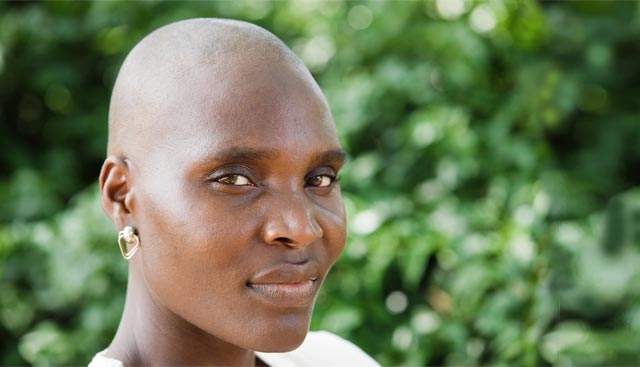Hodgkin Lymphoma

Lymphoma is a cancer of the lymphatic system, a network of tissues and organs that help rid the body of toxins and waste. The lymphatic system also plays a key role in the body’s immune response by producing and circulating lymph, a fluid that contains infection-fighting white blood cells.
The two main types of lymphoma are Hodgkin lymphoma and non-Hodgkin lymphoma (more common). A pathologist can determine the type by examining a cell sample under a microscope. Typing the lymphoma is a key step in the diagnostic process because the two types can vary significantly in terms of their behavior, growth patterns, spread and response to treatment.
What is Hodgkin lymphoma?
Named for Dr. Thomas Hodgkin, the physician who first described the condition, Hodgkin lymphoma occurs when certain white blood cells (lymphocytes) undergo harmful changes that cause them to grow and divide at an accelerated rate, sometimes spreading beyond the lymphatic system.
Also known as B cells, lymphocytes produce antibodies, which are special proteins that protect the body against illness by fighting off bacteria, viruses and other invaders. Because B cells are an essential part of the body’s immune system, Hodgkin lymphoma can compromise the body’s ability to fight off infections.
Where in the body does Hodgkin lymphoma develop?
In many cases, Hodgkin lymphoma develops in the lymph nodes in the chest, armpit area, abdomen or pelvis. Lymph nodes are bean-sized collections of B cells that are connected via the lymphatic system, which extends throughout the body. By traveling through the lymphatic system, lymphoma can spread from lymph node to lymph node as well as to other tissues and organs.
Does Hodgkin lymphoma always originate in lymph nodes?
In addition to lymph nodes, Hodgkin lymphoma can develop in other lymphoid tissues, such as the:
- Spleen – Located underneath the ribs on the left side of the body, the spleen produces B cells, stores healthy blood cells and filters bacteria, damaged blood cells and other waste from the body.
- Bone marrow – New B cells and blood cells are produced by the bone marrow, a soft fatty tissue found in bone cavities.
- Thymus – A small organ situated behind the breastbone in front of the heart, the thymus plays a role in B cell development.
- Tonsils and adenoids – Located at the back of the throat, the tonsils and adenoids are small collections of lymphoid tissue that create antibodies to target germs that are inhaled or swallowed.
- Digestive tract – The stomach, intestines and other digestive organs contain lymphoid tissues.
How is Hodgkin lymphoma treated?
Hodgkin lymphoma treatment can vary based on several unique factors, including the stage of the cancer and the overall health of the patient. Some options include:
Benefit from world-class care at Moffitt Cancer Center
Moffitt’s Malignant Hematology Program is home to a multispecialty team of board-certified surgeons, medical oncologists, radiation oncologists, pathologists and other medical professionals who are dedicated to providing individualized treatment and supportive care. We offer the latest treatment options for Hodgkin lymphoma, non-Hodgkin lymphoma and other blood and bone marrow cancers.
As a National Cancer Institute-designated Comprehensive Cancer Center, Moffitt performs extensive research that has received national recognition. Taking a unique bench-to-bedside approach, we make our research breakthroughs available to benefit our patients as quickly as possible. We also have a robust clinical trials program, which allows our patients to access to leading-edge treatments that are not yet widely available.
If you would like to learn more about Hodgkin lymphoma, you can request an appointment with a specialist in our Malignant Hematology Program by calling 1-888-663-3488 or submitting a new patient registration form online. We do not require referrals.



